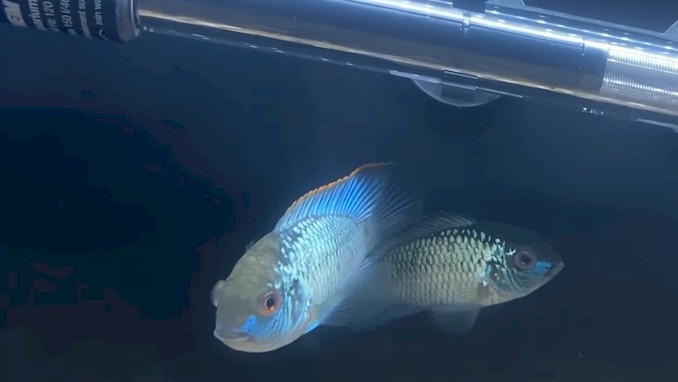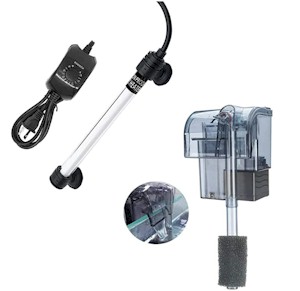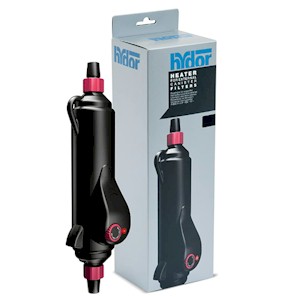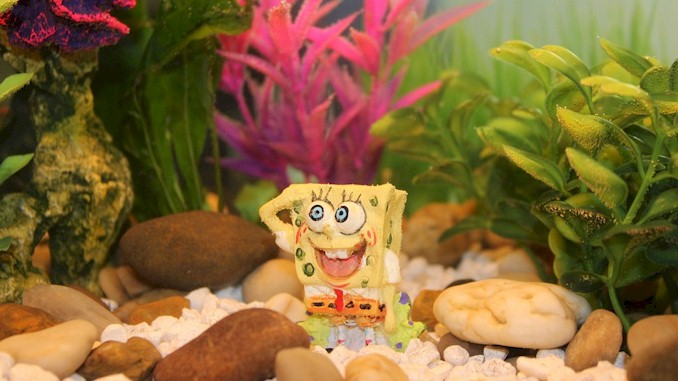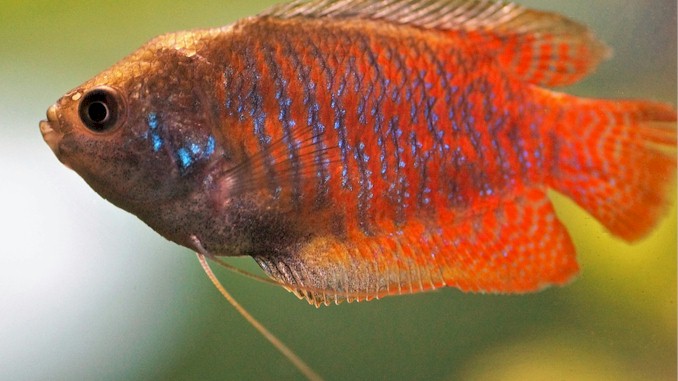Do Guppies Need a Heater – A Complete Guide
As the days passed, the weather took a turn towards coldness, causing a drop in the temperature of my guppy tank. In September, the thermometer indicated a toasty 84°F, but by October, it had dipped to a rather chilly 75°F. If the trend continued, the temperature would soon be outside the safe range for my guppies. I took to the internet to seek advice from experienced guppy owners. My research yielded a wealth of information, and I gained much knowledge from the experience. The following sections will detail what I learned, and I hope that it will prove helpful to others facing similar situations.
Yes, guppies require a heater to maintain a stable water temperature in their aquarium. Guppies are tropical fish and prefer water temperatures between 72°F and 82°F. Without a heater, the water temperature can fluctuate, leading to stress and potential health problems for your guppies. Additionally, a consistent temperature helps regulate their metabolism and immune system, promoting overall health and longevity. Therefore, investing in a reliable heater is crucial for providing your guppies with a comfortable and healthy environment.
If you’re new to guppy care or have been struggling to maintain a stable and suitable environment for your fish, you’ve come to the right place. In addition to answering the main question of whether guppies need a heater or not, this guide will provide you with additional insights and practical tips to help you provide the best possible care for your guppies. From selecting the right type of heater to understanding the ideal water parameters and other crucial aspects of guppy care, you’ll find a wealth of valuable information here. So keep reading to learn more and become a confident and successful guppy owner!
Why do guppies need a heater?
Guppies are tropical fish that require a specific range of water temperatures to thrive. The ideal temperature range for guppies is between 72°F and 82°F. This range ensures that the metabolic and immune systems of your guppies are functioning correctly. Fluctuations in water temperature outside this range can lead to stress and disease in guppies.
Without a heater, it can be challenging to maintain a consistent water temperature in your guppy tank. The water temperature in your guppy tank can be affected by external factors like ambient room temperature, season, and location. As a result, investing in a reliable aquarium heater is essential for maintaining the ideal water temperature for your guppies.
In addition to preventing fluctuations in temperature, a heater also promotes better health for your guppies. According to Dr. Josh Shade, a veterinarian with expertise in fish health, “Consistency in water temperature helps reduce stress on your fish, improves digestion, and allows their immune system to function correctly.” Therefore, investing in a reliable aquarium heater is crucial for providing your guppies with a healthy and comfortable environment.
When selecting an aquarium heater for your guppies, there are a few factors to consider. One of the primary considerations is the size of your tank. You’ll want to choose a heater that is appropriate for your tank size. For example, a 50-watt heater is suitable for a 10-gallon tank, while a 100-watt heater is better suited for a 20-gallon tank. Additionally, you’ll want to choose a heater with adjustable temperature settings, as this allows you to fine-tune the temperature to meet the specific needs of your guppies. In the following sections, you will read more details about this.
Choosing the Right Heater for Your Guppies
When it comes to choosing a heater for your guppy aquarium, there are several factors to consider. These include the size of your tank, the type of heater, and its wattage.
The size of your tank will determine the wattage of the heater you need. As a general rule of thumb, you should aim for 3-5 watts per gallon of water. For example, if you have a 10-gallon tank, you will need a heater with a wattage of 30-50 watts.
There are several types of heaters available on the market. These include submersible heaters, hang-on heaters, in-line heaters, and substrate heaters . Submersible heaters are placed inside the tank and are fully submerged in water. Hang-on heaters attach to the rim of the tank and sit partially in the water. In-line heaters are installed outside of the tank and heat the water as it flows through them. Substrate heaters are designed to heat the water in your tank from the bottom up.
Each type of heater has its advantages and disadvantages. Submersible heaters are popular due to their ease of use and affordability. However, they can take up space inside the tank and may not be suitable for small aquariums. Hang-on heaters are compact and easy to install but may not be as effective at heating large tanks. In-line heaters are efficient at heating large volumes of water but can be more expensive and require additional plumbing. Substrate heaters are good for the plants in tank, but it’s not easy to setup.
When choosing a heater for your guppy aquarium, it is important to consider your specific needs and preferences. You may also want to read reviews from other fish keepers to help you make an informed decision.
So remember, choosing the right heater for your guppies involves considering factors such as tank size, heater type, and wattage. By taking these into account, you can ensure that you provide a stable and comfortable living environment for your guppies. Now let’s dive into tank size.
Guppy Aquarium Heater Size Guide
Choosing the right size heater for your guppy aquarium is important to ensure that the water temperature remains stable. As mentioned earlier, a general rule of thumb is to aim for 3-5 watts per gallon of water. However, this can vary depending on factors such as room temperature and the type of heater you choose.
To help you choose the right size heater for your guppy aquarium, we have put together a handy chart that shows the recommended wattage based on tank size:
| Tank Size (gallons) | Recommended Heater Wattage |
|---|---|
| 5 | 15-25 watts |
| 10 | 30-50 watts |
| 20 | 60-100 watts |
| 30 | 90-150 watts |
| 40 | 120-200 watts |
| 50 | 150-250 watts |
It’s important to note that this chart is intended as a guide only. You may need to adjust the wattage of your heater based on factors such as room temperature and the type of heater you choose.
To wrap things up, choosing the right size heater for your guppy aquarium involves considering factors such as tank size and room temperature. By using my handy chart as a guide, you can ensure that you provide a stable and comfortable living environment for your guppies.
Types of aquarium heaters for guppies
When it comes to selecting an aquarium heater for your guppies, there are several different types to choose from. Each type has its pros and cons, and it’s essential to consider your specific needs and preferences when selecting a heater.
Submersible heaters
Submersible heaters are the most common type of aquarium heater and are entirely submerged in the water. They are easy to install and are suitable for most types of tanks, including both freshwater and saltwater tanks. Submersible heaters come in different sizes and wattages, making it easy to find one that is suitable for your tank. However, they can be challenging to adjust once submerged and may require frequent calibration to maintain accurate temperature settings.
The one in the picture is Orlushy Submersible Aquarium Heater. There are about 18,581 reviews on this product, and its rate averages 4.5 out of 5. This product has different wattages you can choose from, from 25w to 500w. You can click this link or the picture on the upright to Amazon to check its details.
Hang-on-back heaters
Hang-on-back (HOB) heaters are another popular type of aquarium heater. They are designed to hang on the back of your tank and heat the water as it flows through the unit. HOB heaters are easy to install and are suitable for tanks with limited space. They are also easy to adjust and maintain accurate temperature settings. However, they can be noisy and may not be suitable for tanks with heavy water flow.
You can check this called boxtech Aquarium Hang on Filter Aquarium Heater on Amazon. As you can see, there are few options for this type of heater. Click this link or the picture on upright to find more details on Amazon.
In-line heaters
In-line heaters are a type of external heater that is installed in the water circulation system of your tank. They are typically installed in the return line of a canister filter or a sump system. In-line heaters are easy to adjust and maintain accurate temperature settings. They are also less visible in your tank, providing a cleaner aesthetic. However, they can be more challenging to install and may require additional equipment, such as a canister filter or a sump system.
As you can see, the upright picture shows one of the types of heaters sold on Amazon. You can click this link or the picture to check the details on Amazon.
substrate heaters
A substrate heater is a type of aquarium heater that consists of a long heating cable which is laid in curved lines on the bottom panel of the aquarium. The water heats up directly at the cable and rises upwards. Cooler water starts to flow between the cable loops, creating a water circulation in the bottom area which permanently washes nutrient-rich water to the plant roots.
Substrate heaters are typically used as an addition to other heaters and can promote gentle water movement which can stimulate root growth, especially in planted tanks.
This is the most expensive heater in the market, though if you prioritize the clean and neat-looking tank decoration(because it’s invisible after implementation), as well as even heating, you may think it’s the right one. Click this link or the picture to find details on JBL Germany.
In summary, there are several different types of aquarium heaters to choose from when it comes to providing optimal temperature control for your guppies. Submersible heaters are the most common and versatile, while HOB heaters are suitable for tanks with limited space. In-line heaters provide a cleaner aesthetic, and substrate heaters are ideal for planted tanks. Consider your specific needs and preferences when selecting a heater and ensure that it is suitable for your tank size and type.
Common mistakes to avoid when using aquarium heaters for guppies
Aquarium heaters are an essential piece of equipment when it comes to maintaining a stable temperature for your guppies. However, there are some common mistakes that many people make when using aquarium heaters. In this section, we will discuss some of these mistakes and how to avoid them.
1. Choosing the wrong size heater
One of the most common mistakes people make when using aquarium heaters is choosing the wrong size heater for their tank. It’s essential to select a heater that is appropriate for your tank size. If the heater is too small, it will struggle to maintain the temperature, while a heater that is too large may overheat the tank. To determine the appropriate size heater for your tank, use a wattage calculator or consult with an aquarium expert.
Improper placement
Proper placement of the aquarium heater is crucial to ensure accurate temperature control. The heater should be placed in an area of the tank where water circulation is high to distribute heat evenly. Placing the heater in a stagnant area of the tank can result in temperature fluctuations and overheating.
3. Not calibrating the heater
Calibrating your aquarium heater is essential to maintain accurate temperature settings. Over time, the accuracy of the heater may drift, leading to temperature fluctuations. To ensure your heater is functioning correctly, use a thermometer to monitor the water temperature and adjust the heater as needed.
4. Not monitoring the temperature regularly
Regularly monitoring the temperature of your tank is essential to ensure your guppies are living in a healthy environment. Using a thermometer to measure the water temperature can help you identify any issues with your heater before they become a more significant problem. If you notice a significant fluctuation in temperature, it may be an indication that your heater is malfunctioning or needs to be adjusted.
5. Not having a backup plan
Even with proper maintenance, aquarium heaters can malfunction or fail. It’s essential to have a backup plan in case of a heater failure, such as a secondary heater or an emergency plan to relocate your fish to a temporary tank.
As you have learned, you have to pay attention to avoid these common mistakes when using an aquarium heater for your guppies, so you can ensure that your fish are living in a healthy and stable environment. It’s essential to choose the appropriate size heater for your tank, properly place the heater, calibrate it regularly, monitor the temperature, and have a backup plan in case of a heater failure.
What Happens When Guppies Are Exposed To Sudden Temperature Changes?
Guppies are tropical fish that require a stable water temperature to survive. Exposing them to sudden temperature changes can cause severe stress and health problems. In this section, we will discuss the effects of sudden temperature changes on guppies and how to prevent them.
1. Stress and Weakened Immune System
Exposure to sudden temperature changes can cause severe stress in guppies. Stress weakens their immune system, making them more susceptible to diseases and infections. If the sudden temperature change is severe, it can lead to death.
2. Behavioral Changes
Guppies may exhibit various behavioral changes when exposed to sudden temperature changes. They may become lethargic and lose their appetite. They may also hide or stay in one place, avoiding swimming around the tank. In extreme cases, guppies may start to jump out of the water in an attempt to escape the stressful environment.
3. Disease Outbreak
Sudden temperature changes can also cause disease outbreaks in your tank. When guppies are stressed, their immune system weakens, making them more vulnerable to bacterial and fungal infections. These infections can quickly spread throughout your tank, leading to illness and death in your fish.
4. Reproductive Issues
Sudden temperature changes can also affect the reproduction of guppies. Female guppies may become stressed and absorb their eggs, leading to a decrease in their breeding capacity. Males may also become stressed and exhibit decreased reproductive behavior, leading to a decrease in the overall breeding success rate.
5. How to Prevent Sudden Temperature Changes
Preventing sudden temperature changes is crucial to the health and well-being of your guppies. You can do this by ensuring your aquarium heater is functioning correctly, monitoring the temperature regularly, and avoiding any sudden changes to the environment, such as moving your tank or adding cold water.
As mentioned above, sudden temperature changes can have severe effects on the health and well-being of your guppies. They can cause stress, weaken the immune system, lead to behavioral changes, disease outbreaks, and reproductive issues. To prevent sudden temperature changes, ensure your aquarium heater is functioning correctly, monitor the temperature regularly, and avoid any sudden changes to the environment.
What Happens When Guppies Live In Very Cold Water?
Guppies are tropical fish that require warm water to survive, and they cannot tolerate cold temperatures for prolonged periods. In this section, we will discuss what happens when guppies live in very cold water and how to prevent it.
1. Slow Metabolism
Guppies that live in very cold water have a slow metabolism, which can lead to various health problems. Their digestive system slows down, and they cannot process food efficiently, leading to malnutrition and weakness.
2. Low Immune System
Cold temperatures weaken the immune system of guppies, making them more vulnerable to infections and diseases. They are more likely to develop bacterial and fungal infections, which can spread rapidly in cold water environments.
3. Stunted Growth
Guppies that live in very cold water also experience stunted growth. Cold temperatures slow down their metabolism, and they cannot process the nutrients they need to grow. As a result, they remain small and underdeveloped.
4. Behavioral Changes
Guppies living in very cold water may exhibit behavioral changes as they try to adjust to the extreme conditions. They may become lethargic, lose their appetite, and stop swimming around the tank. They may also start to hide or stay in one place, avoiding the cold water.
5. Death
Guppies that live in very cold water for prolonged periods can eventually die. Cold temperatures weaken their immune system, making them more vulnerable to infections and diseases. They may also become malnourished and weak, leading to death.
To prevent guppies from living in very cold water, you need to ensure that the temperature in your tank remains stable and within the recommended range for tropical fish. This can be achieved by using a high-quality aquarium heater and monitoring the temperature regularly.
As you see, guppies cannot tolerate very cold water, and prolonged exposure to cold temperatures that can lead to slow metabolism, weakened immune system, stunted growth, behavioral changes, and even death. To prevent this, ensure that the temperature in your tank remains stable and within the recommended range for tropical fish by using a high-quality aquarium heater and monitoring the temperature regularly.
What Happens If The Water Gets Too Hot?
While guppies require warm water to survive, excessively high temperatures can be just as harmful to them as cold temperatures. In this section, we will discuss what happens when the water in your guppy tank gets too hot and how to prevent it.
1. Oxygen Deprivation
When the water in your guppy tank gets too hot, the oxygen levels in the water decrease. This can lead to oxygen deprivation, which can be fatal to your fish. Guppies may start to gasp for air at the surface of the water, and their gills may appear reddish or inflamed.
2. Increased Metabolism
High water temperatures can also increase the metabolism of guppies, which can lead to various health problems. They may become more active and swim around the tank more frequently, which can cause stress and exhaustion. They may also eat more than they need to, leading to indigestion and bloating.
3. Algae Blooms
Excessively high water temperatures can trigger algae blooms in your tank, which can harm your guppies. Algae blooms consume oxygen in the water and can lead to oxygen deprivation. They can also release toxins into the water, which can be harmful to your fish.
4. Burnt Fins and Skin
If the water in your guppy tank gets too hot, your fish may suffer from burnt fins and skin. High water temperatures can cause burns and lesions on the fins and skin of guppies, which can become infected and lead to other health problems.
5. Death
Excessively high water temperatures can be fatal to your guppies. If the water in your tank gets too hot, your fish may suffer from oxygen deprivation, increased metabolism, algae blooms, burnt fins and skin, and other health problems that can eventually lead to death.
To prevent the water in your guppy tank from getting too hot, you need to ensure that the temperature in your tank remains stable and within the recommended range for tropical fish. This can be achieved by using a high-quality aquarium heater with a thermostat and monitoring the temperature regularly. You should also avoid placing your tank in direct sunlight or near heat sources, as this can cause the water temperature to rise quickly.
In a nut shell, excessively high water temperatures can be just as harmful to guppies as cold temperatures. When the water in your guppy tank gets too hot, your fish may suffer from oxygen deprivation, increased metabolism, algae blooms, burnt fins and skin, and other health problems that can eventually lead to death. To prevent this, ensure that the temperature in your tank remains stable and within the recommended range for tropical fish by using a high-quality aquarium heater with a thermostat and monitoring the temperature regularly.
What is the coldest temp a guppies tank should be?
Maintaining the right temperature for guppies is crucial for their survival and wellbeing. Although guppies are a hardy species, they are still sensitive to temperature changes, especially sudden drops in temperature. To ensure the best possible conditions for your guppies, it’s important to keep their tank at a temperature range that is suitable for them. So, what is the ideal temperature range for guppies, and what is the coldest temperature their tank should be?
The ideal temperature range for guppies is between 72°F to 82°F (22°C to 28°C). This temperature range allows guppies to thrive and grow while minimizing the risk of disease and stress. At temperatures below this range, guppies may become sluggish, inactive, and more susceptible to illnesses. At temperatures above this range, guppies may become stressed, which can lead to health problems.
While guppies can tolerate a wide range of temperatures, the coldest temperature their tank should be is 68°F (20°C). Anything lower than this temperature can put your guppies at risk of developing health issues such as swim bladder disorder, fin rot, and even death. It’s important to note that guppies can survive at lower temperatures for short periods, but prolonged exposure can be detrimental to their health.
To maintain the ideal temperature range for your guppies, it’s essential to use a reliable heater and thermometer. Make sure to place the thermometer at the opposite end of the tank from the heater to get an accurate reading of the overall temperature. Regularly check the temperature of the tank to ensure it stays within the ideal range and make adjustments as needed.
As you can see, while guppies are hardy fish, maintaining the right temperature range is crucial for their health and wellbeing. The ideal temperature range for guppies is between 72°F to 82°F (22°C to 28°C), and the coldest temperature their tank should be is 68°F (20°C). By using a reliable heater and thermometer and regularly checking the temperature of the tank, you can create the best possible environment for your guppies to thrive.
How Should You Test The Water Temperatures For A Guppy Tank?
To maintain a healthy environment for your guppies, it is crucial to ensure the water temperature is suitable for their well-being. But how do you check the temperature of your tank’s water? Here are some methods you can use to test the water temperature:
- Aquarium Thermometer: The most accurate and reliable method is to use an aquarium thermometer. You can buy a digital or a mercury thermometer from any pet store. Place it inside the tank, and it will give you a precise reading of the water temperature.
- Infrared Thermometer: Another way to measure the water temperature is by using an infrared thermometer. It works by pointing the device at the water surface, and it will give you an instant reading. However, this method can be less accurate than the aquarium thermometer, as it measures the surface temperature and not the water’s actual temperature.
- Stick-On Thermometer: Stick-on thermometers are easy to use and are a cheaper alternative to an aquarium thermometer. You can attach them to the outside of your tank, and they will give you a rough idea of the water temperature.
It’s essential to test the water temperature regularly to ensure that it’s within the suitable range for guppies. You can also invest in a heater with a built-in thermostat that will maintain the water temperature automatically. It’s important to remember that any changes in the water temperature should be done gradually to avoid stressing out the guppies. By keeping a close eye on the water temperature, you can provide a comfortable environment for your guppies to thrive.
Keeping a Spare Aquarium Heater Around
It’s always a good idea to have a backup heater on hand in case your primary heater fails. This can be a life-saver for your guppies, especially in the winter months when temperatures can drop rapidly. A spare heater can ensure that the water temperature remains stable and prevents any harm to your fish. Here are some things to consider when keeping a spare aquarium heater around:
- Type of heater: When choosing a backup heater, consider the type of heater you already have in your tank. If you have a submersible heater, you may want to consider a hanging heater as your backup or vice versa. This ensures that if one type of heater fails, the other type can take over and maintain the water temperature.
- Wattage: Choose a backup heater with a wattage that is appropriate for your tank size. The wattage of the backup heater should be equal to or slightly less than the primary heater. This helps prevent overheating or underheating of the water.
- Storage: Store your backup heater in a dry and cool place where it won’t get damaged. Avoid storing it in the same location as your primary heater in case of a power surge or malfunction.
- Testing: Test your backup heater periodically to ensure it is working correctly. It’s also a good idea to test it before using it as a replacement for your primary heater.
- Replacement: If you end up using your backup heater, be sure to replace it as soon as possible. Don’t leave your tank without a backup heater, as this can be dangerous for your guppies.
To sum up, keeping a spare aquarium heater around is an important part of responsible guppy ownership. It can prevent potential disasters and ensure your guppies remain healthy and happy. Choose a backup heater that is appropriate for your tank size, store it correctly, test it periodically, and replace it as soon as possible if you need to use it.

